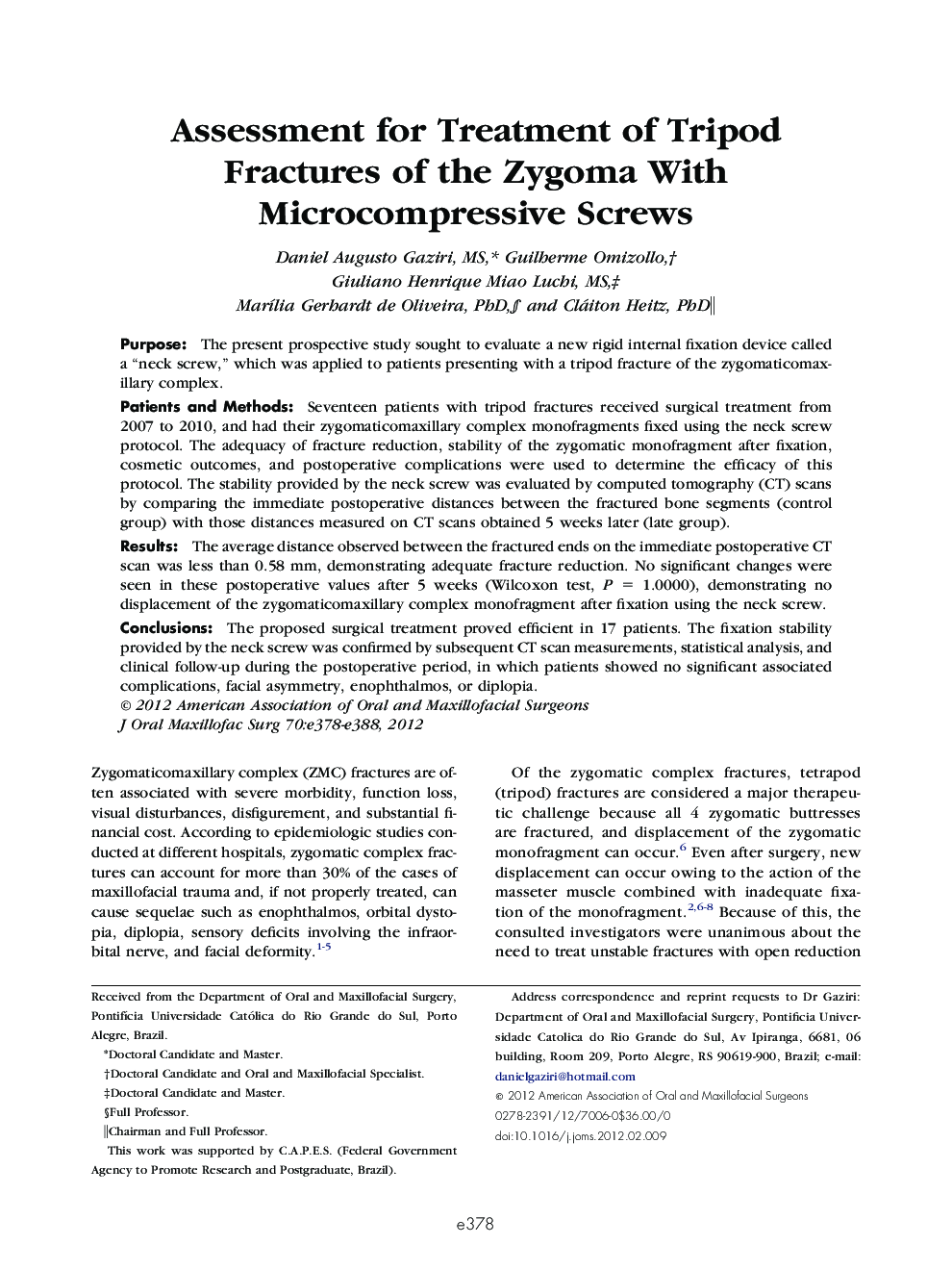| Article ID | Journal | Published Year | Pages | File Type |
|---|---|---|---|---|
| 3153101 | Journal of Oral and Maxillofacial Surgery | 2012 | 11 Pages |
PurposeThe present prospective study sought to evaluate a new rigid internal fixation device called a “neck screw,” which was applied to patients presenting with a tripod fracture of the zygomaticomaxillary complex.Patients and MethodsSeventeen patients with tripod fractures received surgical treatment from 2007 to 2010, and had their zygomaticomaxillary complex monofragments fixed using the neck screw protocol. The adequacy of fracture reduction, stability of the zygomatic monofragment after fixation, cosmetic outcomes, and postoperative complications were used to determine the efficacy of this protocol. The stability provided by the neck screw was evaluated by computed tomography (CT) scans by comparing the immediate postoperative distances between the fractured bone segments (control group) with those distances measured on CT scans obtained 5 weeks later (late group).ResultsThe average distance observed between the fractured ends on the immediate postoperative CT scan was less than 0.58 mm, demonstrating adequate fracture reduction. No significant changes were seen in these postoperative values after 5 weeks (Wilcoxon test, P = 1.0000), demonstrating no displacement of the zygomaticomaxillary complex monofragment after fixation using the neck screw.ConclusionsThe proposed surgical treatment proved efficient in 17 patients. The fixation stability provided by the neck screw was confirmed by subsequent CT scan measurements, statistical analysis, and clinical follow-up during the postoperative period, in which patients showed no significant associated complications, facial asymmetry, enophthalmos, or diplopia.
